WHY USE LED SURGICAL LIGHT?
LED surgical light is a cold light source.
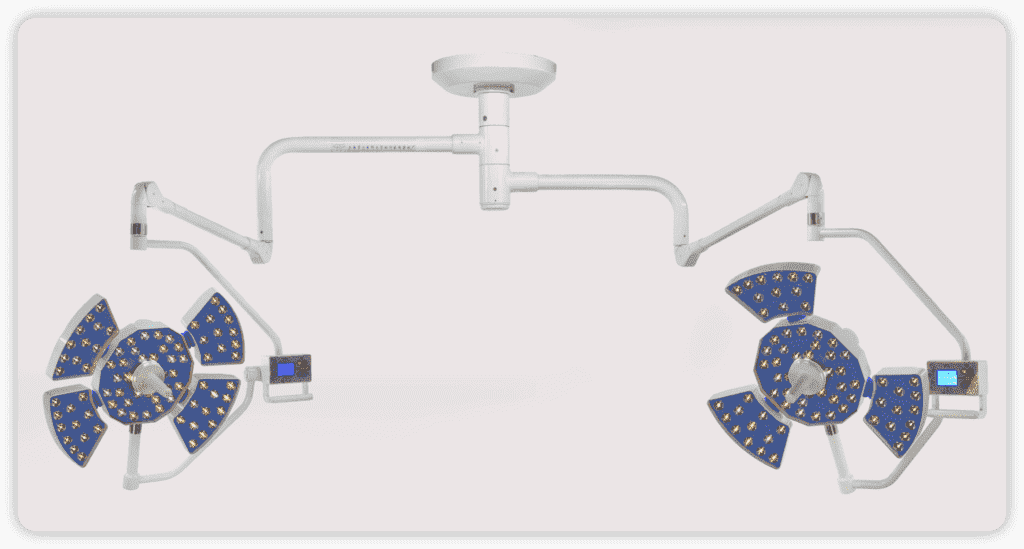
According to FORTUNE Business Insights, the global market size of surgical lights was valued at $596.9 million in 2019.
It is projected at $852.8 million in 2027 with an estimated CAGR of 4.6%.
This article will give you a complete overview of the use of LED surgical lights.
We can see LED surgical lighting in surgical suites and surgery centers.
The light intensity increases optimum visualization, less heat, and shadow-less illumination characteristics.
The surgeon and staff remain comfortable in the less heat of single-headed or dual-headed LEDs than traditional bulbs during long operating cases.
The cold environment of surgical fields causes less damage to expose tissues and improves healthcare outcomes.
Soaring market demand and the use of highly technological advancements in the manufacturing of LED light are making us curious to explore more facts.
Why are LED lights critical in surgical suits?
LED surgical light VS old Halogen Light
When you search for the use of surgical lighting you will see differences between LED light and traditional light.
This comparison tells us about the quality, performance, and durability.
A good combination of the three in any one of the surgical lighting can improve the surgical experience of the surgeon as bright daylight.
- led life usually more than 50000 hours,halogen life usually about 1500 hours
- led power usually 1-3w,halogen power 150w
- led color temp 4300-6700k.but halogen usually 2700k
- led Recycling and reuse, relatively more environmentally friendly,but halogen Contains mercury heavy metals, a little pollution to the environment
- Brightness points, LED 20W can reach 3000-4000LUX, while halogen lights 55W for max 1000LUX
Traditional medical illumination is more inductive to eye strain as compared to LED.
This is the reason surgeons use it to avoid reflexes and glare in surgery centers.
Another harmful impact of the use of traditional headlamps is neck pain in surgeons.
We see a specified light field diameter configuration in the advanced SNMC lighting equipment.
These specially designed headlamps are a good source of light for surgeons.
Therefore, in clinical settings, whenever you required a lighting system we recommend the use of LED lights. SNMC LED lighting products are the right solutions to reach effective healthcare outcomes.
LED surgical lights have major benefits
“No lighting solution is as effective as LED when it is a matter of dealing with an accurate and clear vision and superior illumination”
Following are some of the LED light benefits:
White light improves vision
Traditional lights are yellow and manufacturers attempt to reduce this yellowness by using expensive coatings and filters.
These filters turn yellow color to white, yet do not reaches the desired whiteness.
On the other hand, LED lights are best engineered for the emission of white light at the best color temperature 4400K.
There are present many LEDs per light head, which means any variance of light is canceled in LED letting the color proportionate.
Cold light emission and prevention of Infrared Radiations
In today’s operating rooms an ideal light source temperature range is 3000-6700 K.
The color rendition index of surgical lights falls between the ranges of 3000-6700 K.
In old medical facilities, the color temperature is measured at 4000 K.
Therefore, halogen lights produce lights at high color temperature.
The increase in temperature means the emission of heat.
But in LED surgical lights, the color temperature remains around 4,300 K-4500K.
It means LED lights maintain optimum color temperature and influence the color and rendition of exposed tissues and fluids.
Better Color Rendition
The color rendering ability of lights is very important.
We can use a color rendering index to differentiate between delicate differences in color.
The presence of high-intensity CRI means high visualization of pastel colors and determination of deep and saturated rendering of red color.
Hence, in the lighting industry, the development of special measurement is named R9.
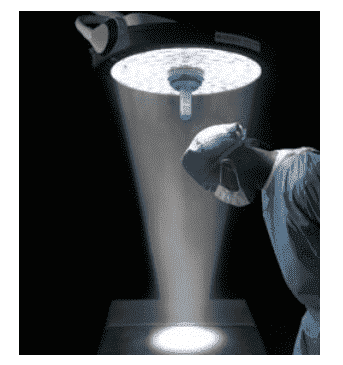
LED produces light that is more consistent as compared to other lights
The white and consistent light heads of LED bulb will produce effective shadow control as compared to halogen lights.
A multifaceted reflector and singular bulb are features of a traditional halogen system.
The different shapes and positions of different light heads will produce different light patterns like hot and cold spots of light.
Hence, the light pattern of the light field remains constant and it means that surgeons have no problem with the shadows produced across the pattern.
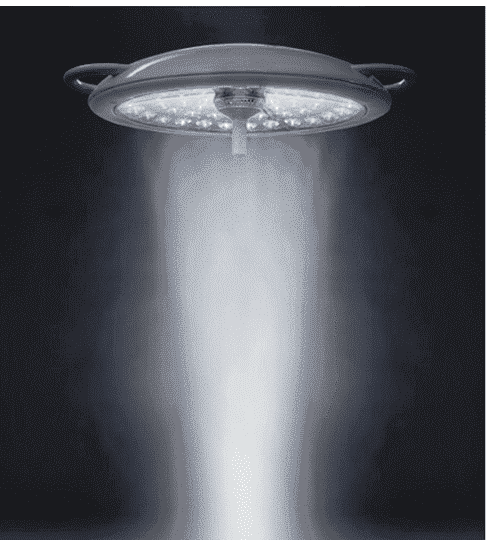
Infection Control
We can see that in most healthcare facilities, special attention is given to the maintenance of a clean and sterilized environment in operation rooms or surgical wards. There are surgical lights which are performing sterilizing functions through different cleaning mechanics.
The manufacturers are responsible for maintaining the minimum crevices and dust-friendly surfaces to minimize cleaning efforts. The two LED surgical lights to have removable and sterilized handles supporting the process of cleanliness and sterilization.
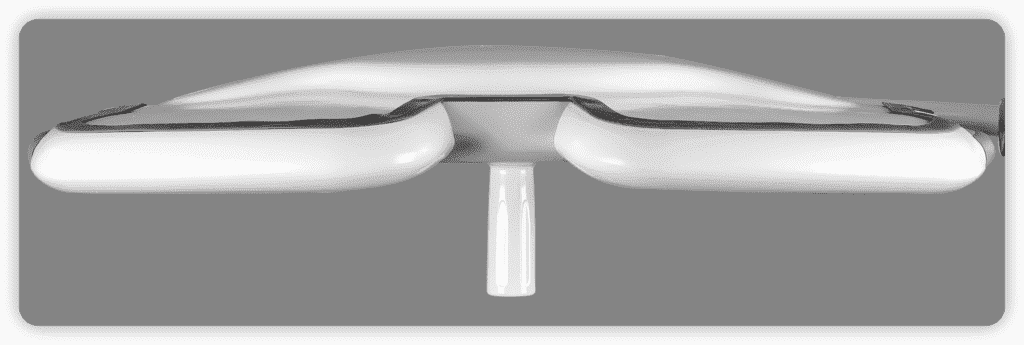
Excellent shadow control (shadowless)
We can see the increasing use of LED surgical lights in healthcare facilities due to their excellent shadow control feature.
The shadows are cast from the head of surgeons, arms, and bodies during the surgery. In this way, LED lights are excellent in:
· Using multiple light sources to cross-focus the virtual elimination of shadows
· controlling reflective glare from other surfaces illuminated through surgical lights
· reducing eye fatigue and blurry vision
No reflectors with multi-dimensions- no distraction
The adjustment of a wide range of light fields is another attractive point of LED surgical light.
The best diameter for illumination is 10% Ec which is exactly the diameter around the light field and light center.
It is, however, tried to keep the light diameter of D50 as 50% of a diameter of D10.
For this purpose, medical professionals focus on maintaining 50% of the entire pie of light intensity falling within 50% of the total diameter, as shown in the following fig.

The above investigation over the critical use of LED surgical lights in surgical suits cannot be ended, but we are taking a pause here. To further extend our discussion over why to use LED surgical lights? We are now reviewing their roles in the corporates for the benefit of patients and the environment.

LED surgical lights important to CSR
Power Backup for Surgical Lighting
LED is the most appropriate answer to reduce the cost of power and save inadequate sources of energy. LED is a popular lighting solution for healthcare organizations.
Healthcare organizations require an uninterrupted and reliable source of power supply for their surgical rooms.
In most cases, the power supply interruptions are restored within five seconds and need to be maintained at a minimum of 50% of the regular lux intensity.
This should not be less than the minimum requirement of 40,000 lux.
Healthcare corporates can take their power maintenance decisions on the base of following a comparison of technical and operational requirements of surgical lights.
Technical and operational guidelines for surgical and examination lights
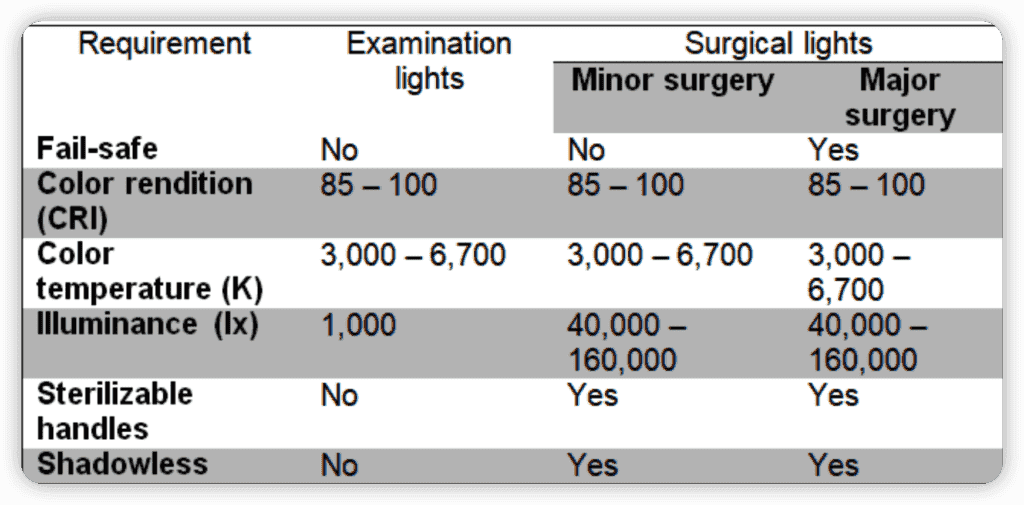
Reduced Carbon Emission- CSR
Environment sustainability is the other important element of CSR.
Surgical lights can help healthcare organizations to produce less carbon footprint in the environment. The high demand for LED lights at the corporate level will also reduce the emission of carbon footprint at the manufacturing level.
They use less than 80% of the energy as compared to the standard incandescent bulb.
We consider the efforts taken at the corporate level to the reduction of carbon footprint with the enhanced use of LED lights are a contribution and a promotion step toward CSR.
Thanks to saving in power consumption and reduction in Carbon footprint emissions!
So far, we have discussed the critical use of LED surgical lights in direct clinical settings and the corporate world as a brand to save money and resources. Now we move our discussion to factors responsible for LED surgical lights’ sway.
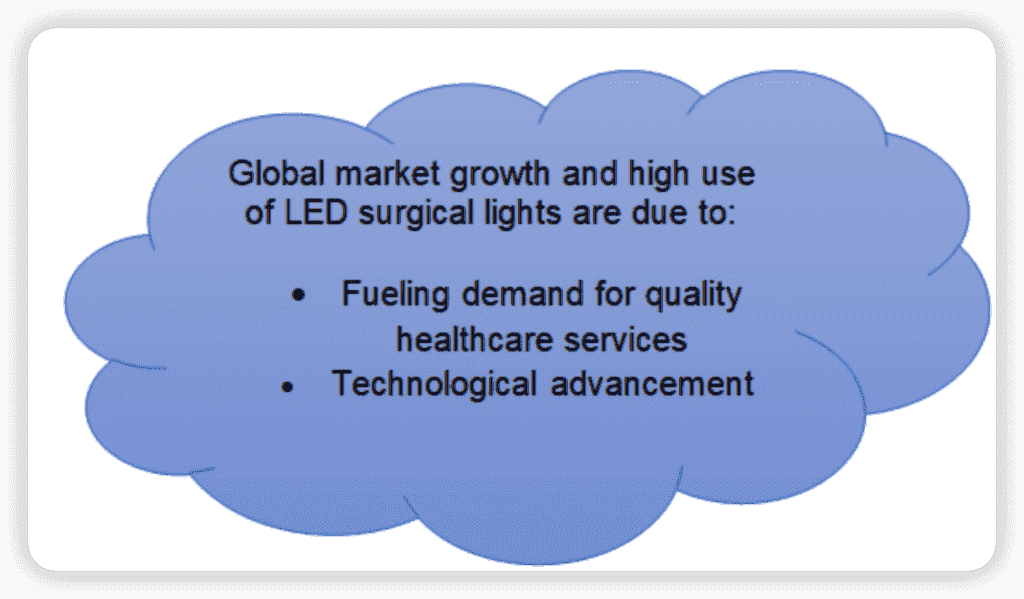
Emerging demand for Advanced Healthcare facilities and Improved Patient Outcomes
Soaring Market Demand
According to the statistical record of the European Union, about five million cataract surgeries were performed in Europe in 2017. However, two-fold increases were proposed till 2020.
Such projections have no doubt, increased the demand for new clinical devices in addition to increasing the productivity of operating room lights.
The rise in per capita expenditure and the anticipation of surgical procedures are due to growth in the market by 2027.
Turning to the main discussion point, the increasing use of surgical lighting, at this stage, I am interested to present the state of emerging healthcare markets in developing countries.
Government Investment and Public-Private Partnerships
The healthcare market of these countries is under the influx of the private sector, overlapping the market directly or entering through public-private partnerships.
The attempts are inductive to the lucrative demand for advanced healthcare facilities in these markets.
Moreover, the huge influx of investment from the Government of these emerging markets is enhancing growth opportunities for healthcare activities.
For instance, according to the report of Aster DM Healthcare –Qatar, the expansion activities of the hospital started in Jan 2020 through the establishment of healthcare facilities in India and GCC areas. The group is planning to establish new healthcare settings with 350 and 600 beds in Bengaluru,
500 beds in Chennai, and some other cities of India in part of this expansion plan.
I am hoping a high surge in the market demand for advanced healthcare facilities leads to quality patient outcomes!
Conclusion
If you are still confused about determining whether LEDs are worth the future investment, go through a side-by-side comparison presented in this discussion between a good LED surgical light and traditional Halogen light.
In this case, I am confident even a non-professional will prefer LED surgical light.
Just imagine the argument of a top leading surgeon!

2 回复
it seems great ,how can contact with you
thanks
we will contact with you asap